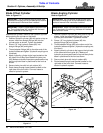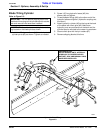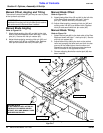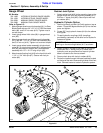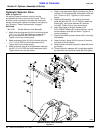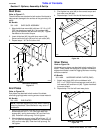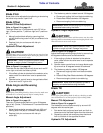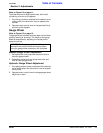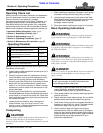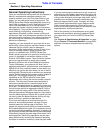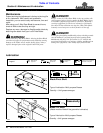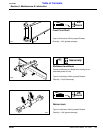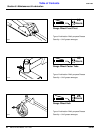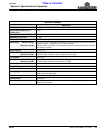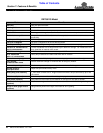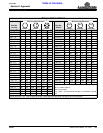
18
Section 4: Operating Procedures
RBT55120 Rear Blades 301-172M
5/21/07
Land Pride
Table of Contents
Section 4: Operating Procedures
Operating Check List
Hazard control and accident prevention are dependent
upon the awareness, concern, prudence and proper
training involved in the operation, transport,
maintenance and storage of the blade. Therefore, it is
absolutely essential that no one operates the 3-Way
Rear Blade without first having read, fully understood
and become totally familiar with the Operator’s Manual.
Make sure the operator has paid particular attention to:
• Important Safety Information, pages 1 to 5
• Section 1: Assembly & Set-Up, page 7
• Section 3: Adjustments, page 16
• Section 4: Operating Procedures, page 18
• Section 5: Maintenance & Lubrication, page 20
Make the following inspections after attaching the 3-Way
Rear Blade to the tractor:
1. Inspect tractor safety equipment to make sure it is in
good working condition.
2. Carefully raise and lower the implement to ensure
that the drawbar, tires, and other equipment on the
tractor do not contact the frame and moldboard.
3. Carefully pivot Rear Blade fully clockwise and offset
blade such that the moldboard end closest to the
tractor is in line with the tractor tire. Raise and lower
implement to ensure tractor tires and tractor do not
contact the blade.
4. Carefully pivot Rear Blade fully counterclockwise
and offset blade such that the moldboard end closest
to the tractor is in line with the tractor tire. Raise and
lower implement to ensure tractor tires and tractor do
not contact the blade.
5. Inspect hydraulic hoses for wear, damage and
hydraulic leaks. See “Avoid High Pressure Fluids
Hazard” onpage 3.
Replace damaged and worn hoses
with genuine Land Pride parts.
Transporting
!
CAUTION!
When traveling on public roads at night or during the day, use
accessory lights and devices for adequate warning to
operators of other vehicles. Comply with all federal, state and
local laws.
Operating Checklist
✔ Check Reference
Check 3-point Hook-up procedure. Be sure all
pins have been installed and are secured.
Page 9
All blade adjustments have been made and pins
have been installed and are secured.
Page 8
The operator has read and understood how to
operate the blade.
Page 18
The Rear Blade has been lubricated as required.
Page 20
Check the blade initially and periodically for loose
bolts & pins, See Torque Values Chart.
Page 25
1. When traveling on roadways, transport in such a way
that faster moving vehicles may pass you safely.
2. Leave enough clearance on both sides of the Rear
Blade when traveling straight or making turns to keep
the blade from contacting obstacles such as
buildings, trees or fences.
3. Slow down when traveling over rough or hilly terrain.
Basic Operating Instructions
!
WARNING!
Do not use blade tilt to raise tractor tires off the ground for
repair. Improper use can damaged the 3-Way Rear Blade.
!
WARNING!
Do not operate the side shift cylinder with blade in the ground
or to push or pull other objects. Improper use can damaged
the 3-Way Rear Blade.
!
WARNING!
Do not use the Rear Blade for pulling fence posts, stumps, etc.,
lifting objects, carry objects or towing other equipment. Any
of the above can result in 3-Way Rear Blade damage, serious
bodily injury or death.
!
DANGER!
Never carry a person on the Rear Blade. A person can fall and
be ran over by the Rear Blade or tractor causing serious
injury or death.
1. Thoroughly inspect the work area for buried utility
cables, pipelines, sprinkler heads and any
unforeseen objects. Mark any potential hazards.
2. Place grade stakes if you intend to develop a specific
grade or soil level.
3. Adjust the blade to the desired angle, tilt, and offset
position before lowering the blade to the ground.
4. Lower blade to the ground and proceed forward at a
speed of no more than 2 to 4 mph. The blade should
immediately begin shaving the soil surface.
5. Set the tractor’s draft-link height control to the
desired position. With the blade set at a 90 degree
angle you may need to raise the blade slightly so that
the dirt or gravel can flow out evenly under the blade
effectively shaving off high spots and filling in
potholes or depressions.
IMPORTANT: Avoid catching hydraulic hoses on
brush, post, stumps, and other protrusions that
could damage and/or break them.



